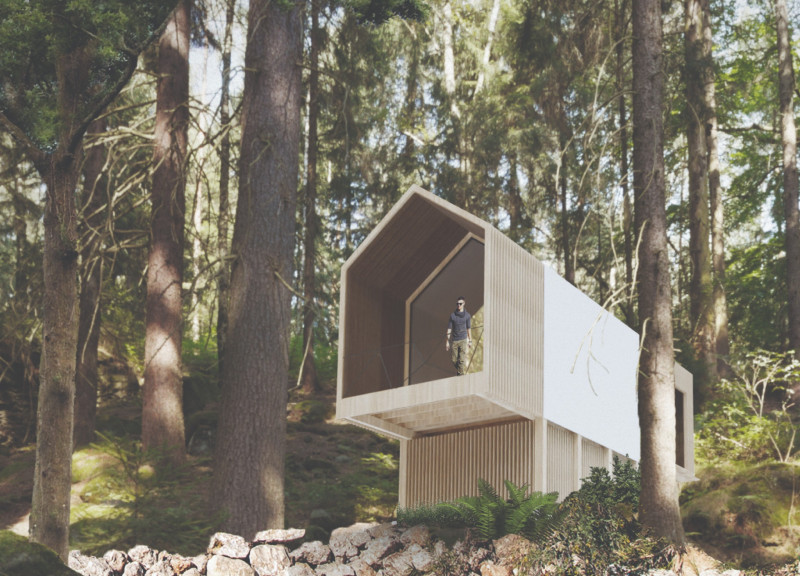5 key facts about this project
The primary function of Nest is to provide a comfortable living environment that fosters both privacy and communal interaction. The architectural layout includes distinct spaces such as living areas, restrooms, and outdoor terraces, which broaden the usability of the structure. This project encapsulates the idea of modern living through its emphasis on efficient use of space and resource mindfulness.
Sustainable design is a core element of Nest. The choice of materials—encompassing reclaimed wood, concrete footings, and compressed hay insulation—demonstrates a commitment to eco-friendly construction practices. The incorporation of local stone and painted aluminium roofing not only provides aesthetic appeal but also enhances the building's resilience against weather elements. These materials are selected not only for their sustainability but also for their ability to create a harmonious relationship between the building and its environment.
Unique Design Criteria
Nest distinguishes itself from conventional residential designs through its modular layouts and innovative features. Each configuration is designed to be user-oriented, allowing residents to tailor the space according to their specific needs. This design flexibility is enhanced by elements such as integrated storage and adaptable living zones, which cater to diverse family dynamics.
The project employs passive heating and cooling techniques, ensuring that residents can maintain a comfortable indoor climate throughout the seasons. Strategic window placements optimize natural light and ventilation, reducing reliance on artificial heating and cooling systems. This focus on energy efficiency contributes to lower operational costs and a reduced ecological footprint.
Architectural Expression and Landscape Integration
The architectural expression of Nest reflects an intention to be unobtrusive within its natural setting. The building's orientation and material choices are carefully considered to maximize views and outdoor connectivity. Features like small balconies and terraces promote outdoor living and allow residents to engage with the surrounding landscape.
In summary, Nest combines technical expertise with thoughtful design to create a sustainable living solution. The project demonstrates a strong commitment to user-oriented design while emphasizing environmental responsibility. For those interested in understanding the intricacies of this project further, reviewing the architectural plans, sections, and overall architectural designs will provide deeper insights into its construction and spatial dynamics.


























